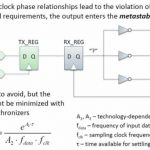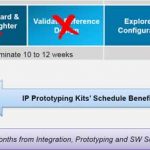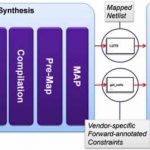In the semiconductor industry High-Level Synthesis (HLS) and SystemC have become essential tools, allowing engineers to model complex hardware designs using familiar C/C++ constructs. Yet, despite the widespread adoption of these languages, the debugging workflows in hardware development lag far behind those in software… Read More
Tag: debugging
Webinar: Accelerate IC Layout Parasitic Analysis with ParagonX
We are pleased to offer two webinar sessions for your convenience. Please choose the time that best fits your schedule:
10:00AM – 12:00PM CET (session #1 for EMEA/APAC)
10:00AM – 12:00PM PST (session #2 for NA)
Featured Speakers:
- Kopal Kulshreshtha, Principal Product Specialist, Synopsys
- Rob Dohanyos, Principal Product
Webinar: Don’t Let VHDL Debugging Slow You Down! Use Questa One Sim
Join us for this essential webinar where we’ll explore how Questa One Sim empowers VHDL designers to dramatically enhance their debugging productivity. We’ll move beyond basic simulation viewing and dive into advanced features designed to pinpoint issues faster, understand design behavior more intuitively,
CEO Interview with David Zhi LuoZhang of Bronco AI
David Zhi LuoZhang is Co-Founder and CEO of Bronco AI with extensive experience in building AI systems for mission-critical high-stakes applications. Previously while at Shield AI, he helped train AI pilots that could beat top human F-15 and F-16 fighter pilots in aerial combat. There, he created techniques to improve ML interpretability… Read More
Essential Debugging Techniques Workshop
Essential Debugging Techniques Workshop
This workshop is for hardware engineers, system architects, and anyone who wants to learn best practices for debugging challenging issues encountered while developing FPGAs, SoCs, PCBs, and embedded systems using the Vivado Design Suite. The features and capabilities of the Vivado
Formal-based RISC-V processor verification gets deeper than simulation
The flexibility of RISC-V processor IP allows much freedom to meet specific requirements – but it also opens the potential for many bugs created during the design process. Advanced processor features are especially prone to errors, increasing the difficulty and time needed for thorough verification. Born out of necessity, … Read More
Visual Debug for Formal Verification
Success with Open-Source Formal Verification
The dream of 100% confidence is compelling for silicon engineers. We all want that big red button to push that magically finds all of our bugs for us. Verification, after all, accounts for roughly two-thirds of logic design effort. Without that button, we have to create reference models,… Read More
Up front phases improve CDC analysis
Many tools find clock domain crossings (CDCs) in FPGA designs. Some don’t find the right ones since they don’t comprehend things like in-house synchronizer constructs. Some find too many based on misunderstanding intent, inaccurate constraints, and other factors that lead to noise.… Read More
More on HAPS hybrid prototyping for ARMv8 with Linaro
A few weeks ago we previewed a Synopsys webinar describing how they are linking the ARM Juno Development Platform with the HAPS-80 and HAPS ProtoCompiler environment. I’ve had a look at the archived event and have some additional thoughts.… Read More
One FPGA synthesis flow for different IP types
Both Altera and Xilinx are innovative companies with robust ecosystems, right? It would be a terrible shame if you located the perfect FPGA IP block for a design, but couldn’t use it because it was in the “wrong” format for your preferred FPGA. What if there were a way around that?
There is a compelling argument to use each FPGA vendor’s… Read More








